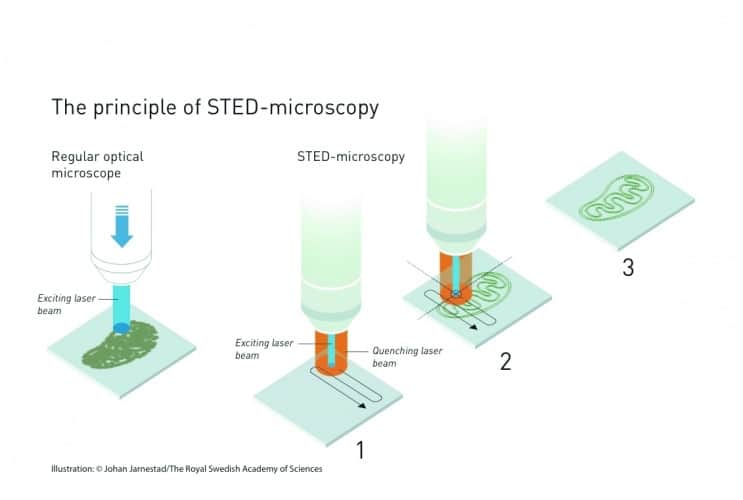Imaging experts awarded Nobel Prize for Chemistry
This year’s Nobel Prize for Chemistry has gone to three scientists who developed technologies which allow optical microscopes to obtain images of biological structures on the nanometre scale, including individual molecules inside cells, sub-cellular structures and processes, and the interplay between proteins.

Long thought to be impossible, imaging at such high resolution has allowed researchers to watch diseases taking hold in living cells, making possible huge strides in the development of new treatments.
Optical microscopy has long been thought limited because it was not possible to obtain clear images of anything smaller than half the wavelength of light, that is around 0.2micrometres. Although individual cells could be seen, the structures within them and even large protein molecules could not; viruses were also below this limit, which is knows as the Abbé Limit after microscopist Ernst Abbé, who came up with it in 1873.

The first of the Nobel breakthroughs came from Prof Stefan Hell, a German microscopist working at Turku in Finland. Using a technique called stimulated emission, Hell devised a way to use lasers to both induce and quench — switch on and off — fluorescence in antibodies which could be coupled to DNA. Hell’s technique, called stimulated emission depletion, uses a laser beam with a nanoscale diameter to induce fluorescence, which is surrounded by a wider, ring-shaped quenching beam. Both beams scan over the sample, with the narrow central beam acting like a torch, illuminating a tiny fraction of the sample at any one time. The microscope’s processors combines the images from the scan with positional information of where the laser probe was when the image was obtained to give a combined image whose resolution matches the width of the inducing beam. Hell perfected the technique at the University of Göttingen in 2000.
Register now to continue reading
Thanks for visiting The Engineer. You’ve now reached your monthly limit of news stories. Register for free to unlock unlimited access to all of our news coverage, as well as premium content including opinion, in-depth features and special reports.
Benefits of registering
-
In-depth insights and coverage of key emerging trends
-
Unrestricted access to special reports throughout the year
-
Daily technology news delivered straight to your inbox










National Gas receives funding to develop Gravitricity underground hydrogen storage system
One single rock salt mine - Winsford - has 23 <i>MILLION </i>cubic metres of void and even allowing for 10% of that void set aside for hazardous waste...